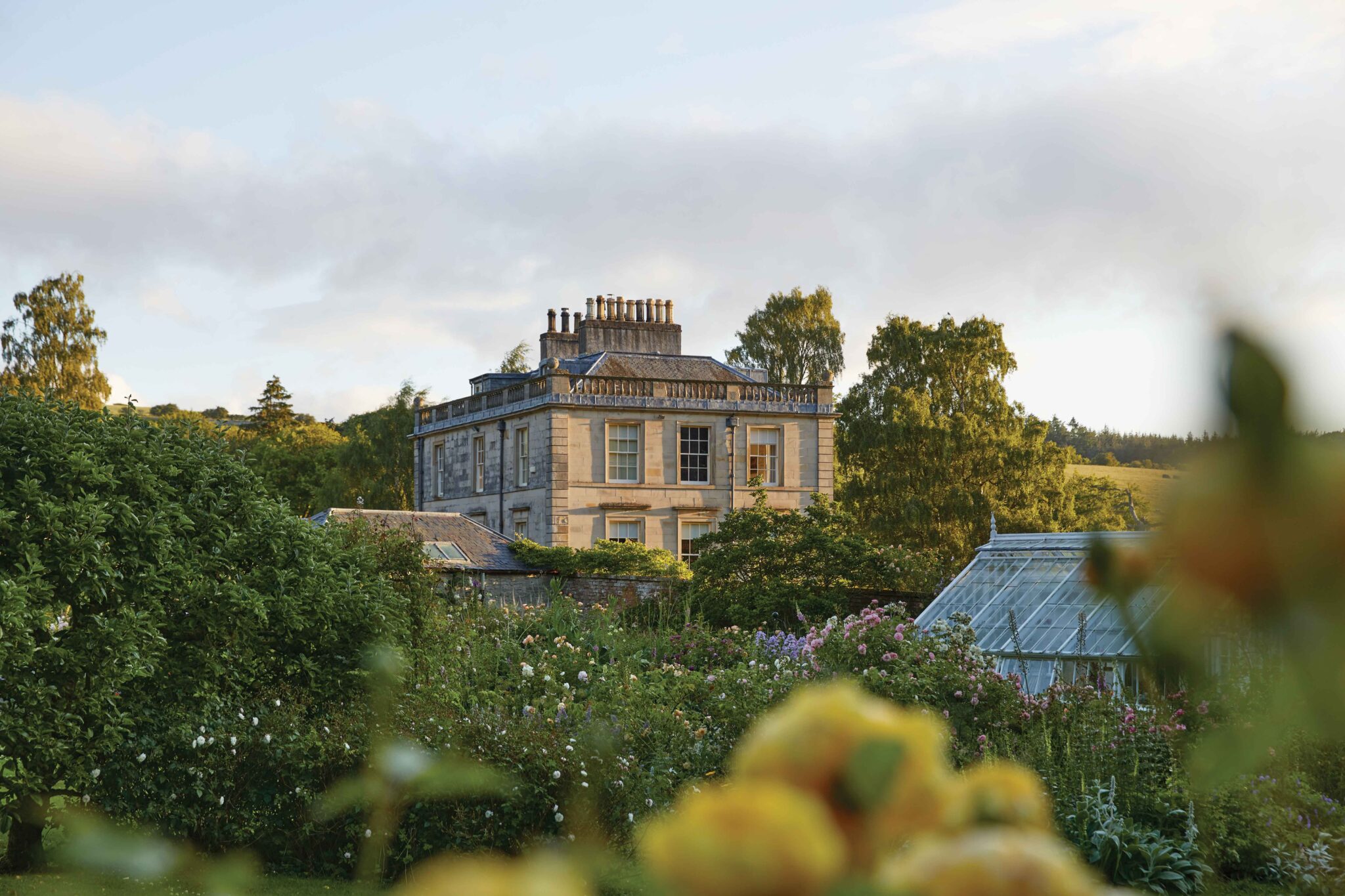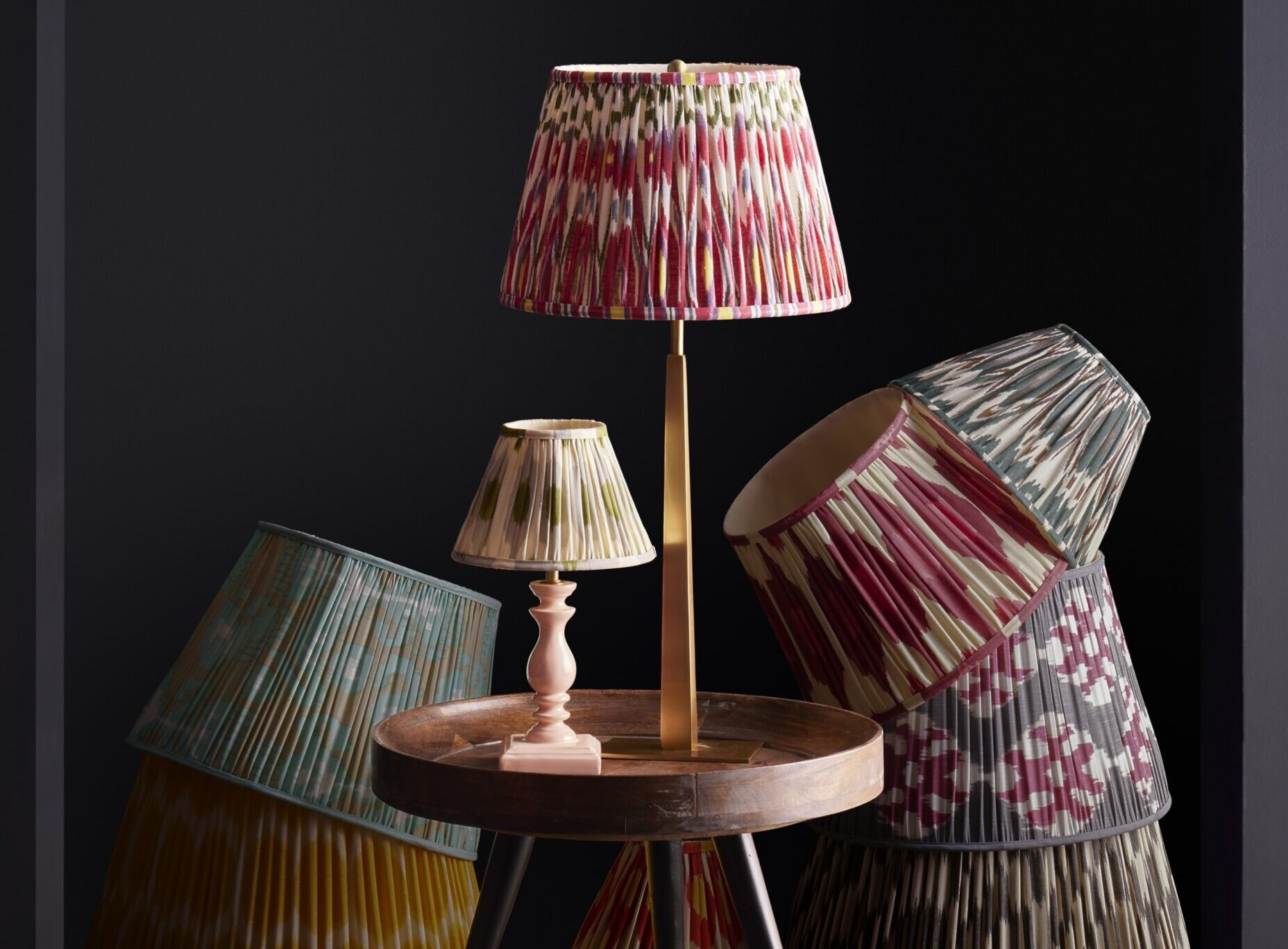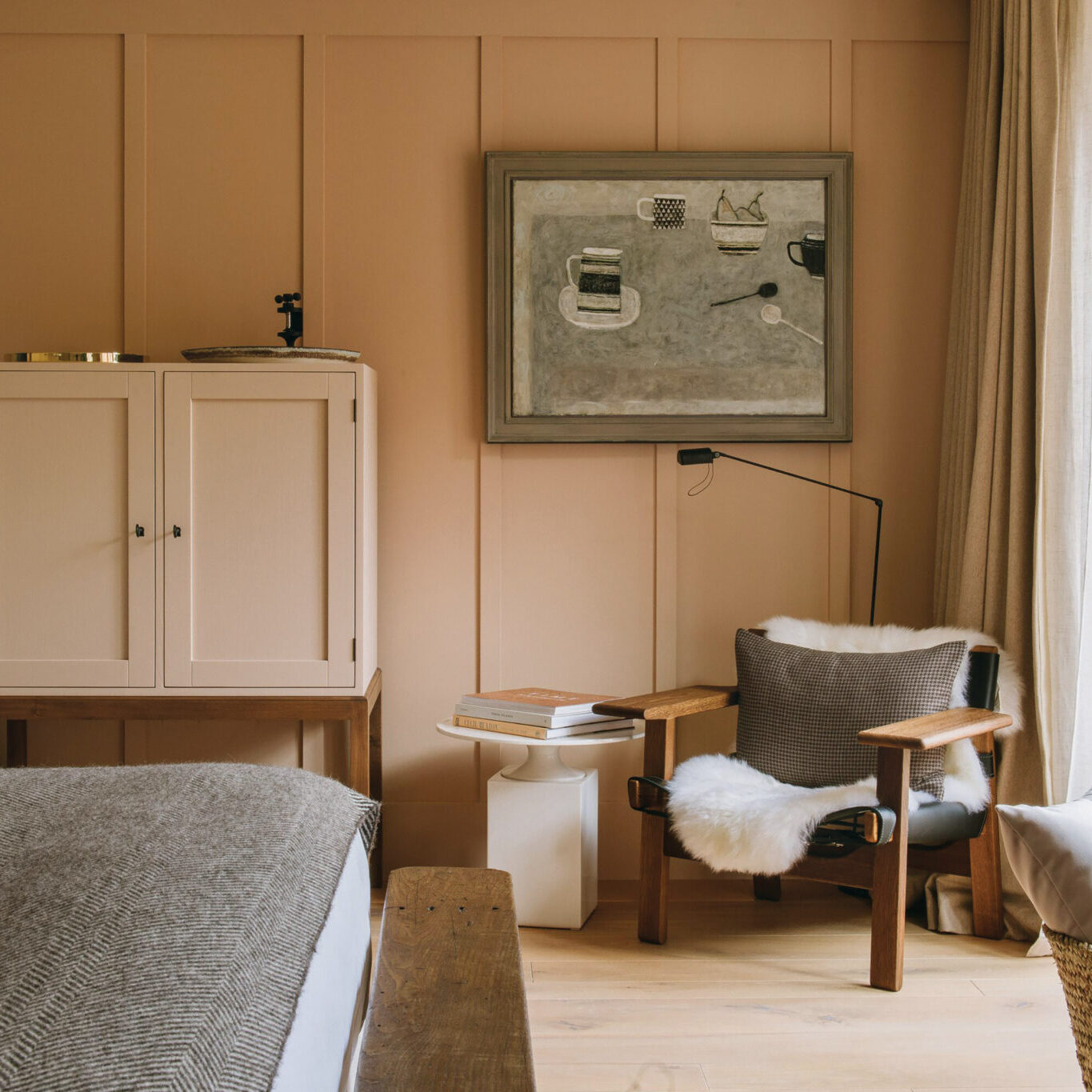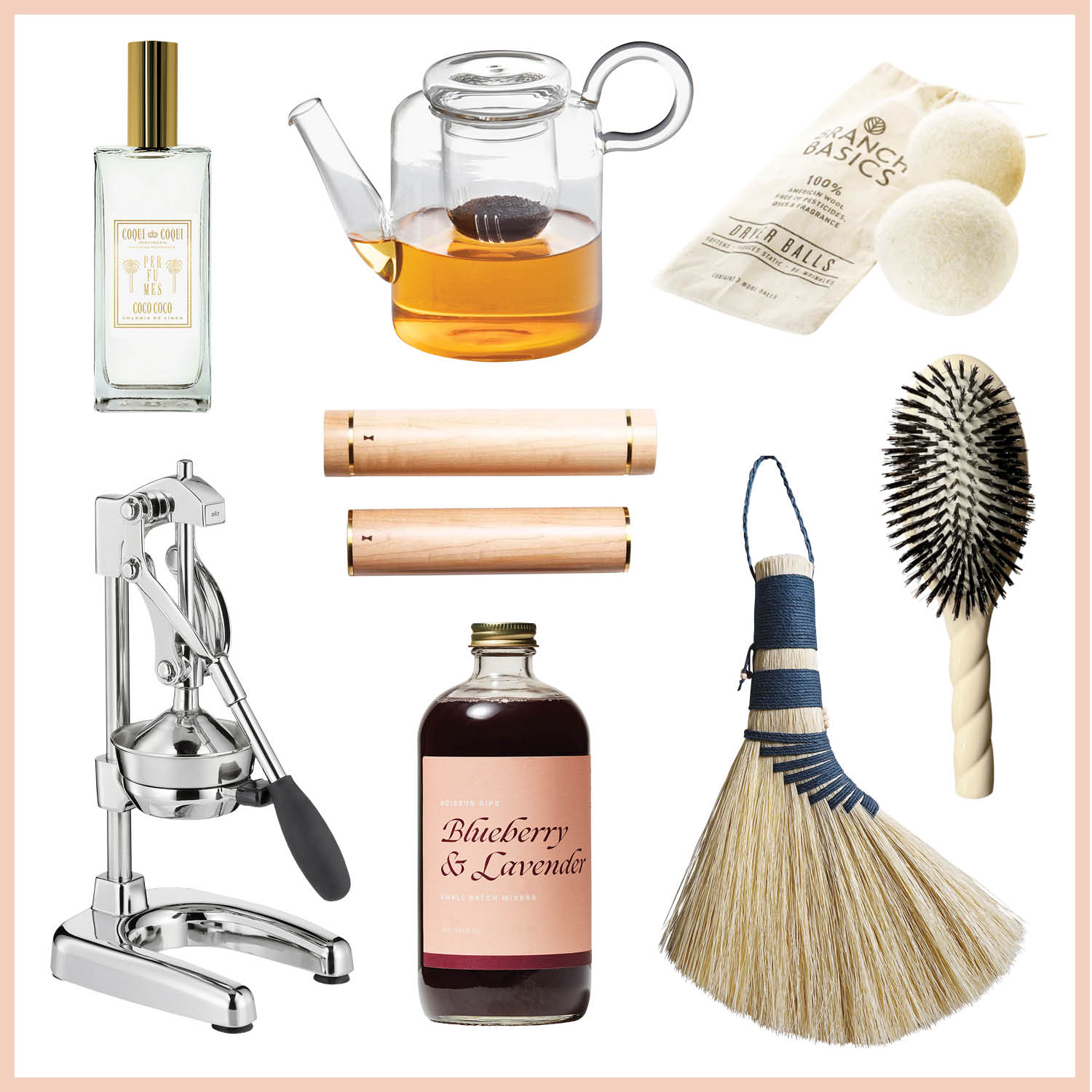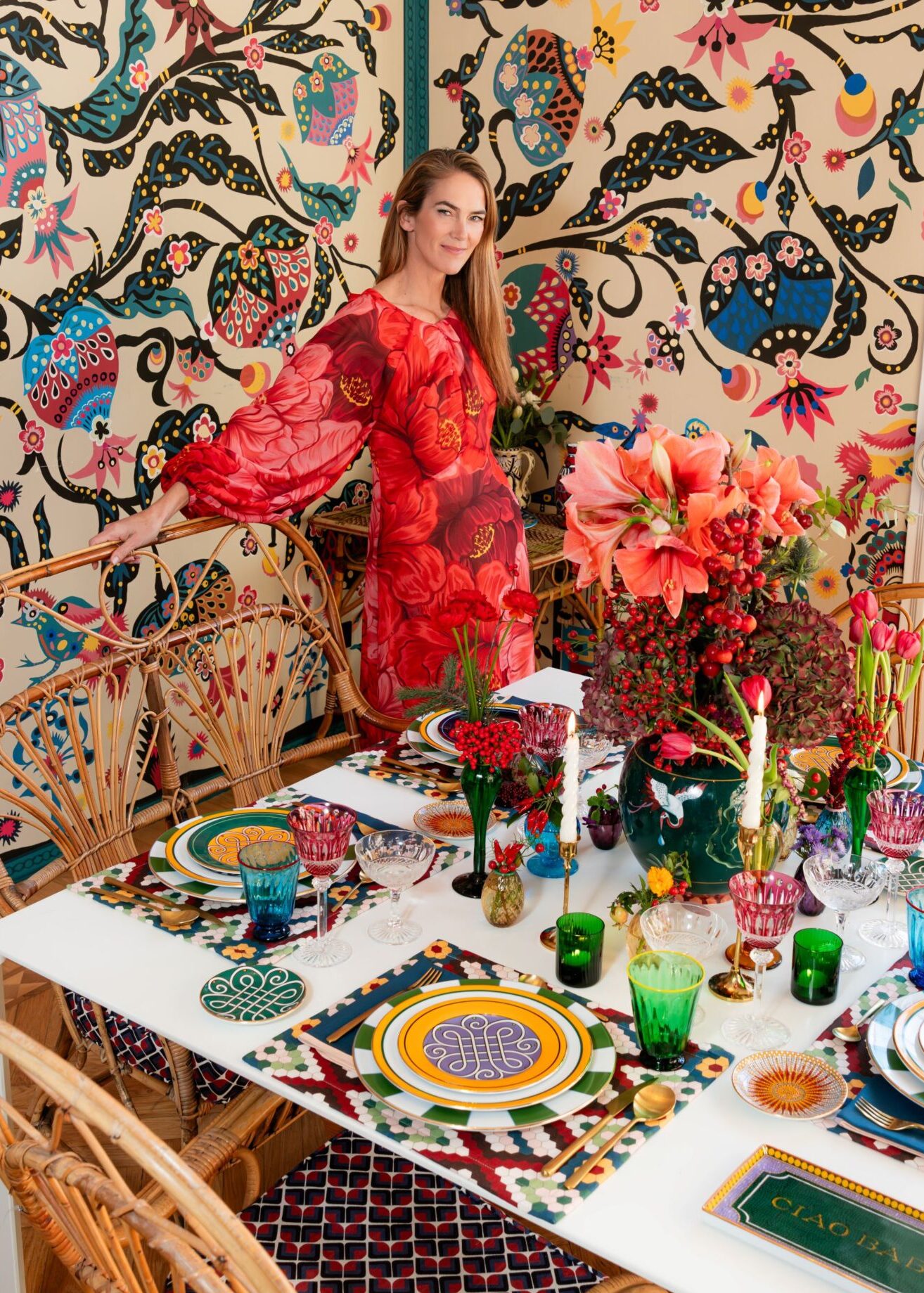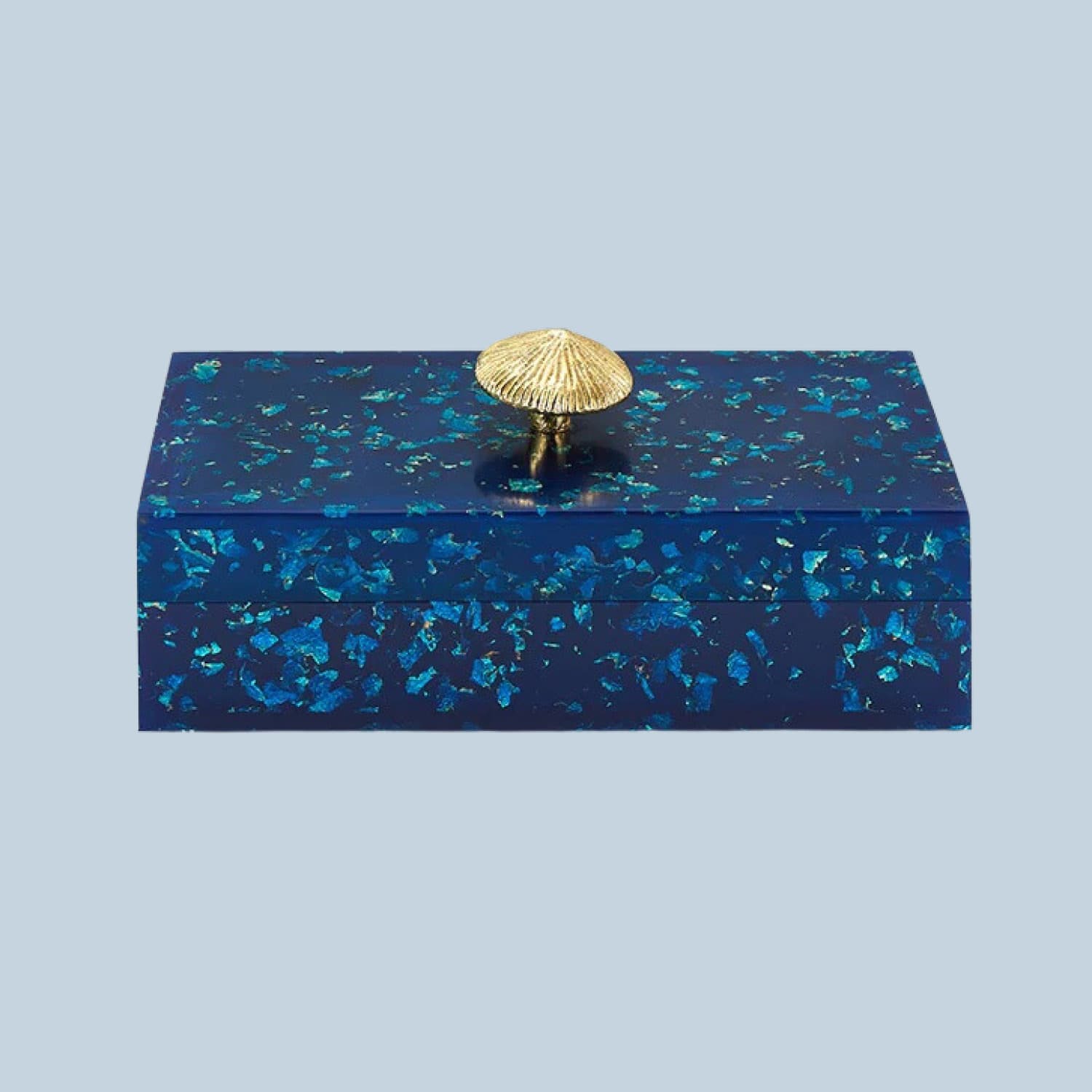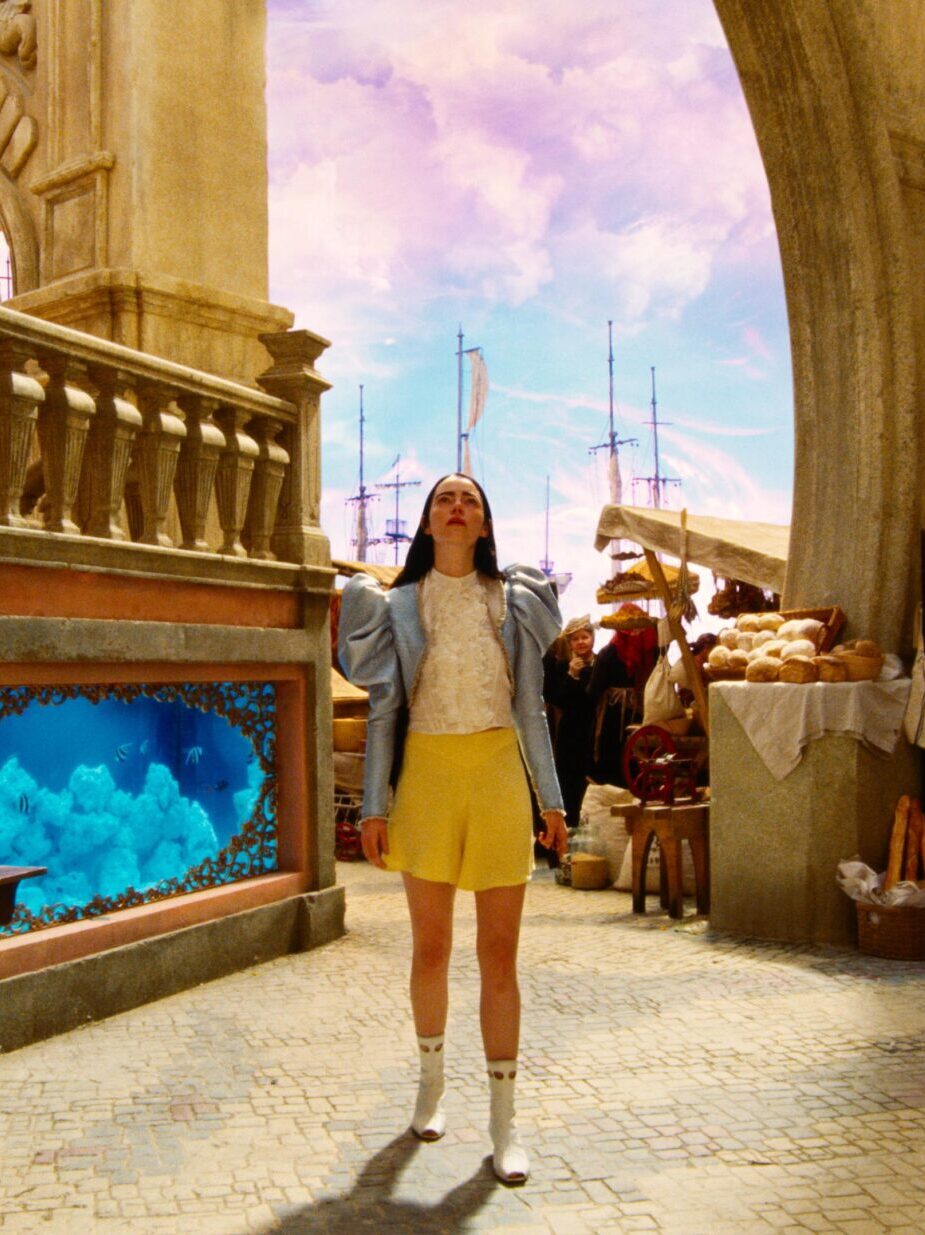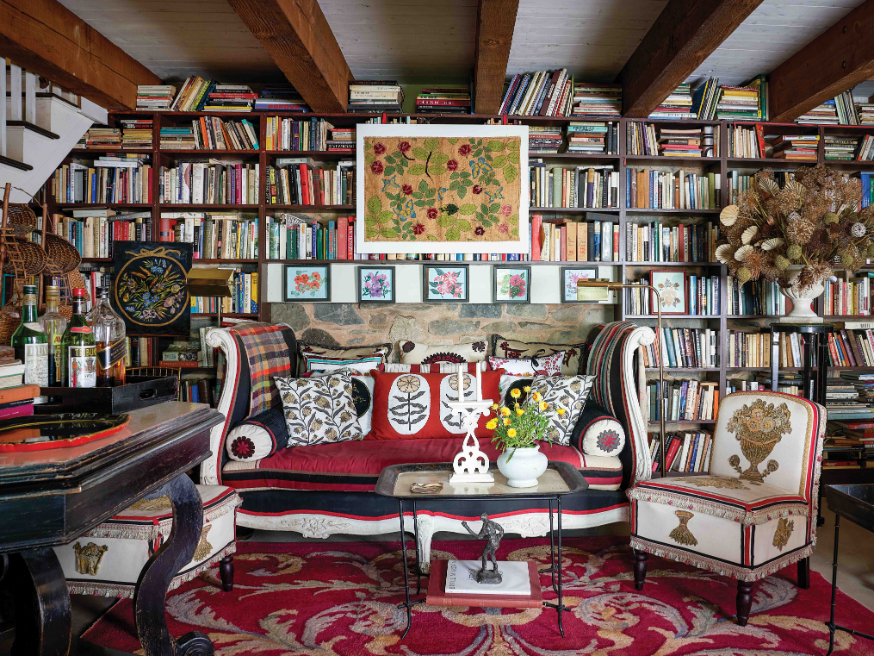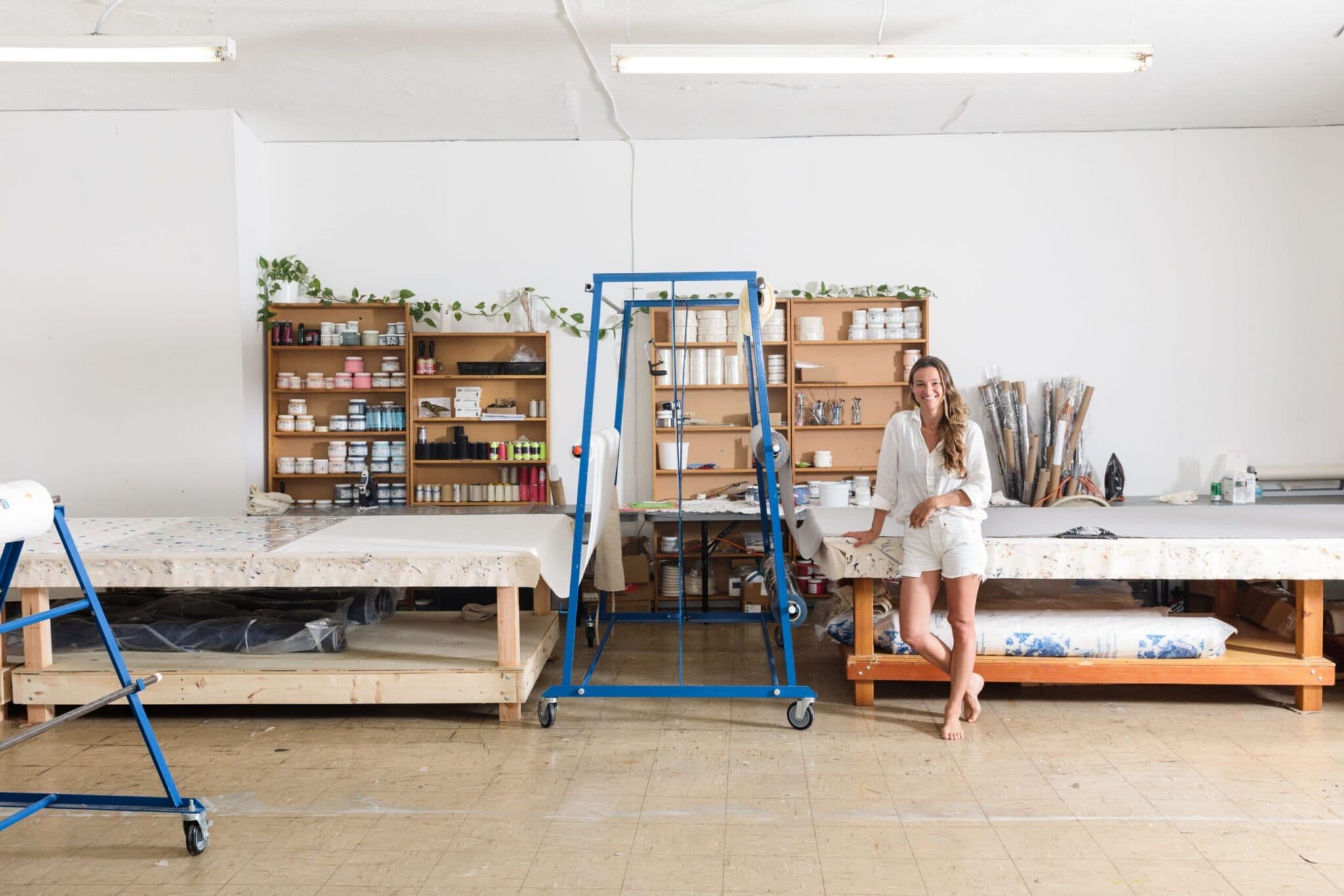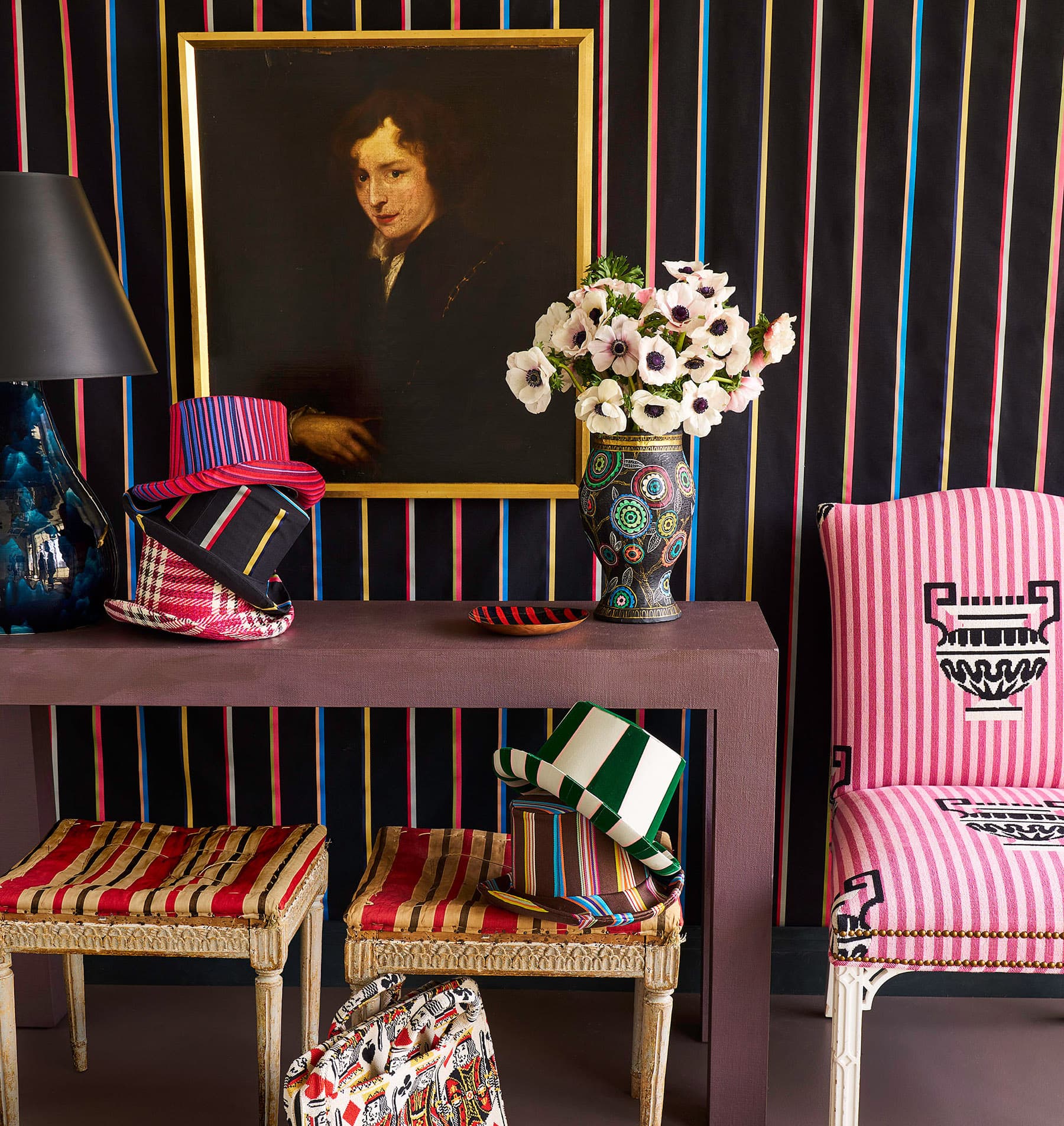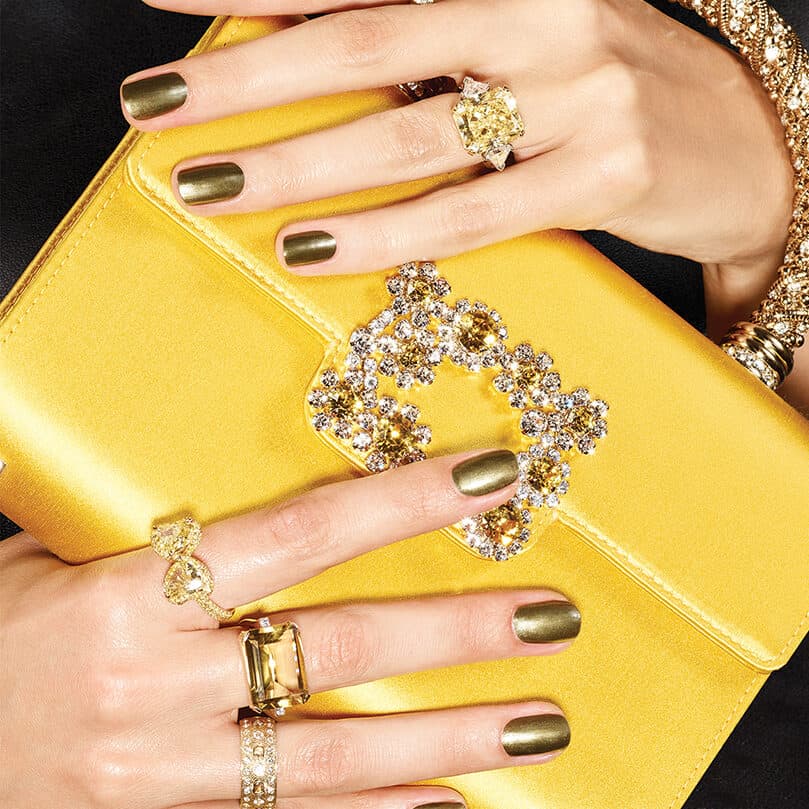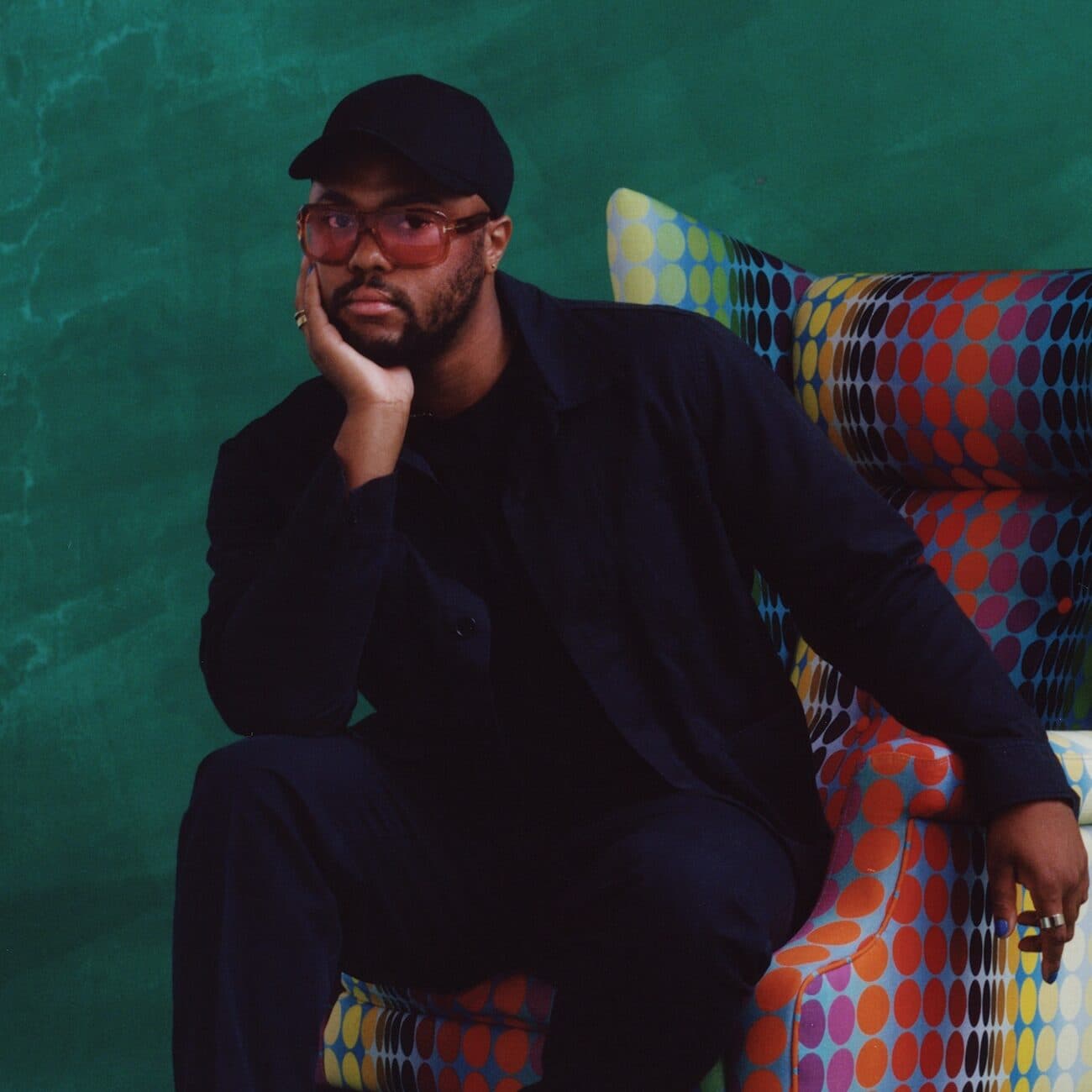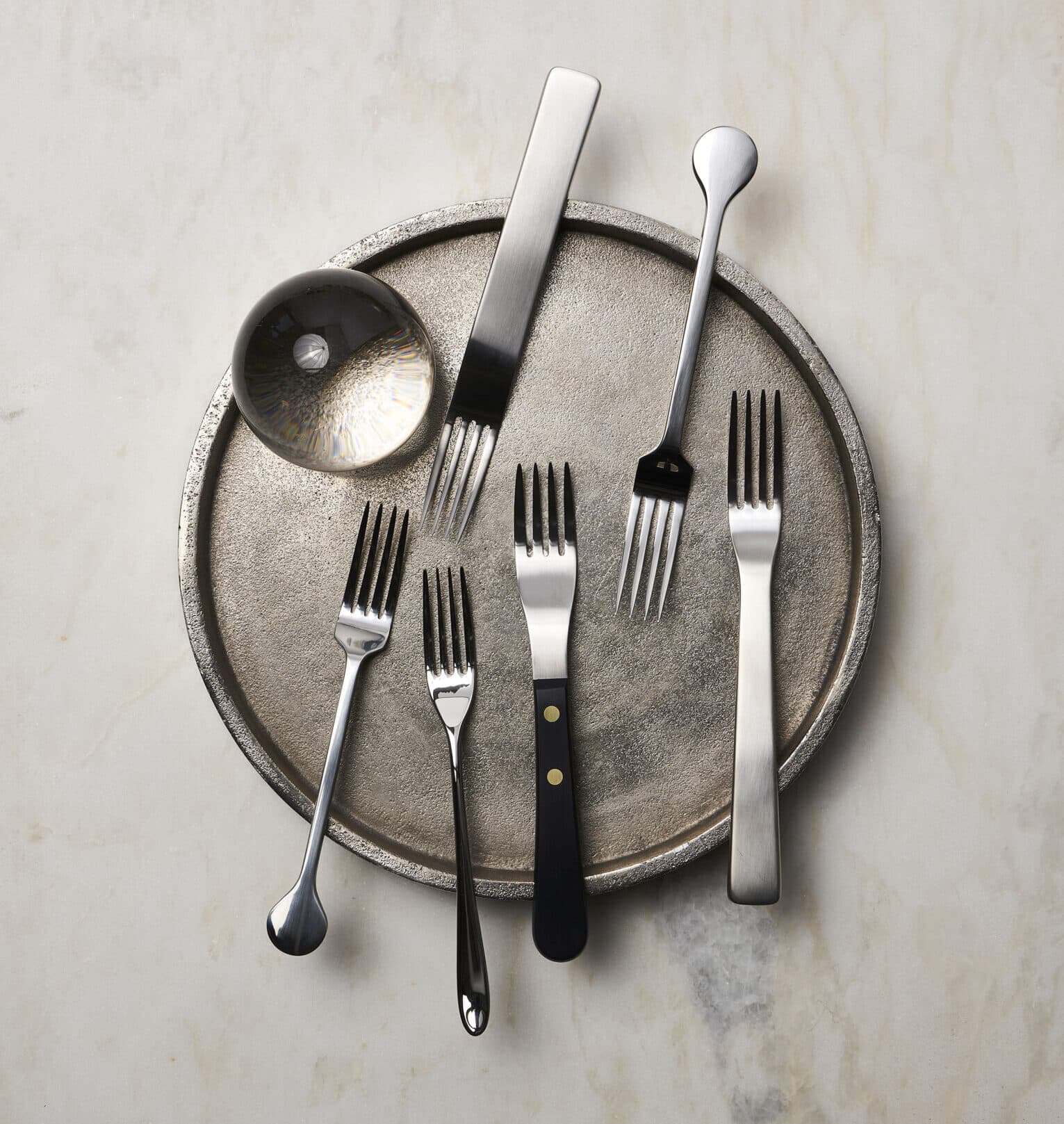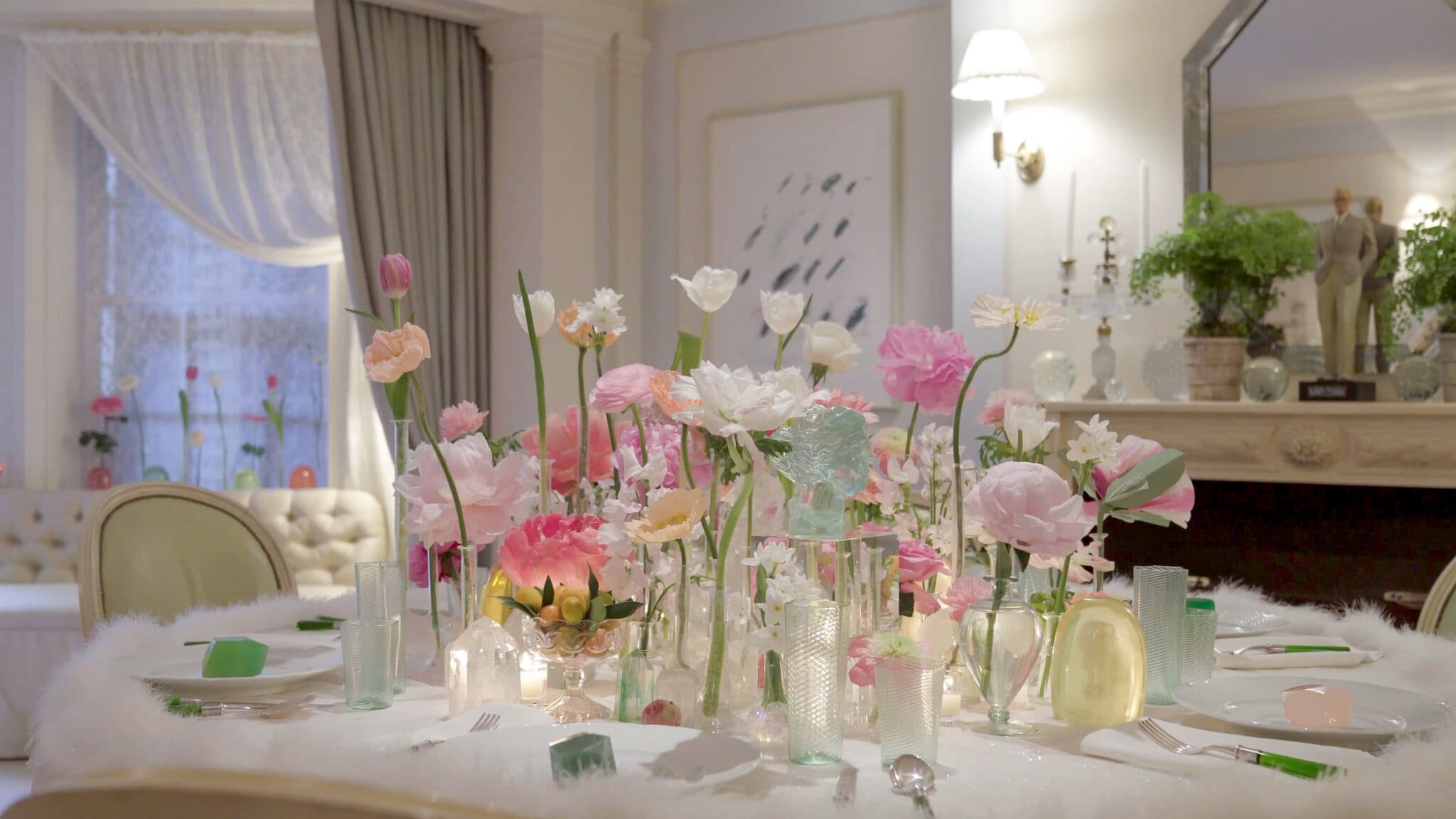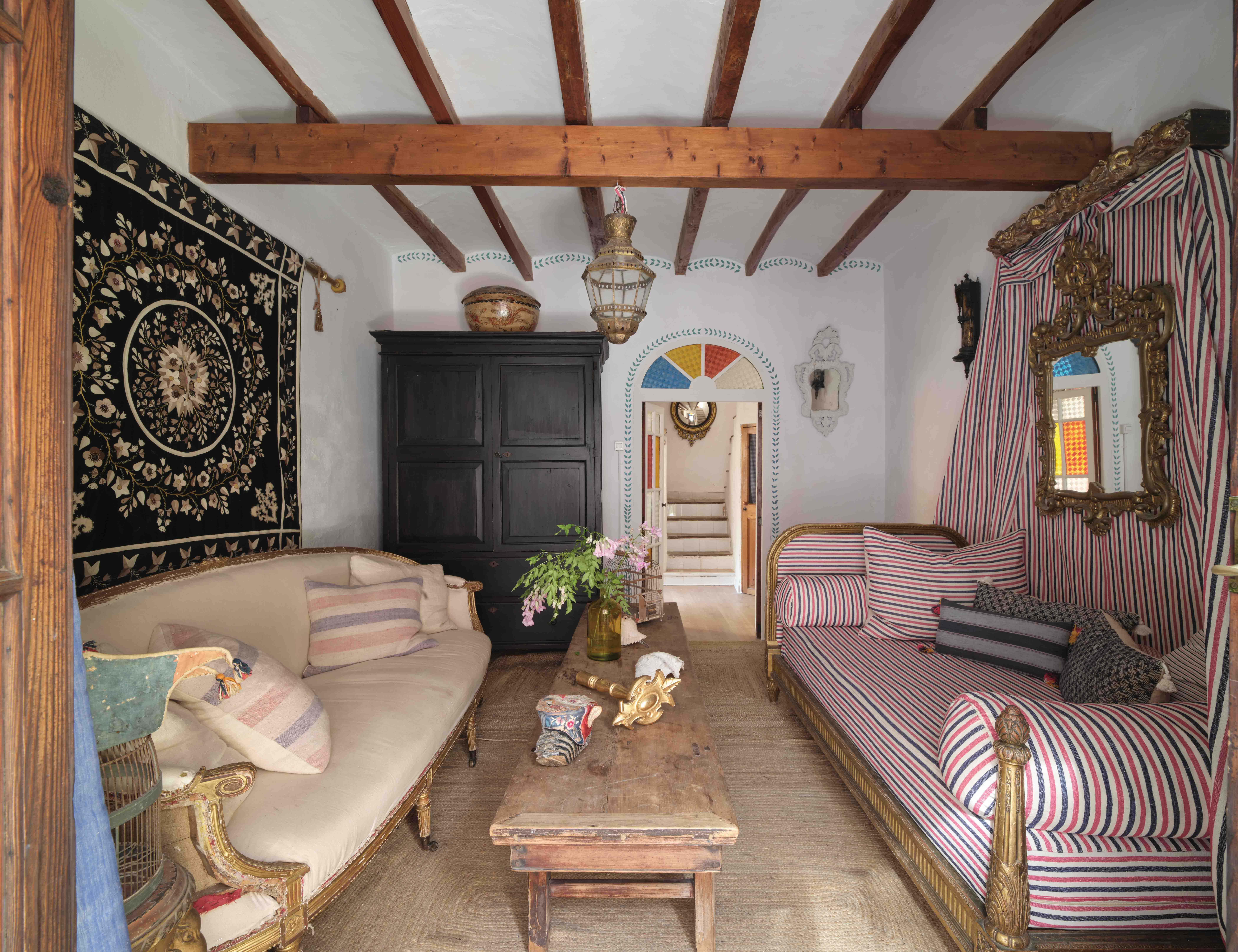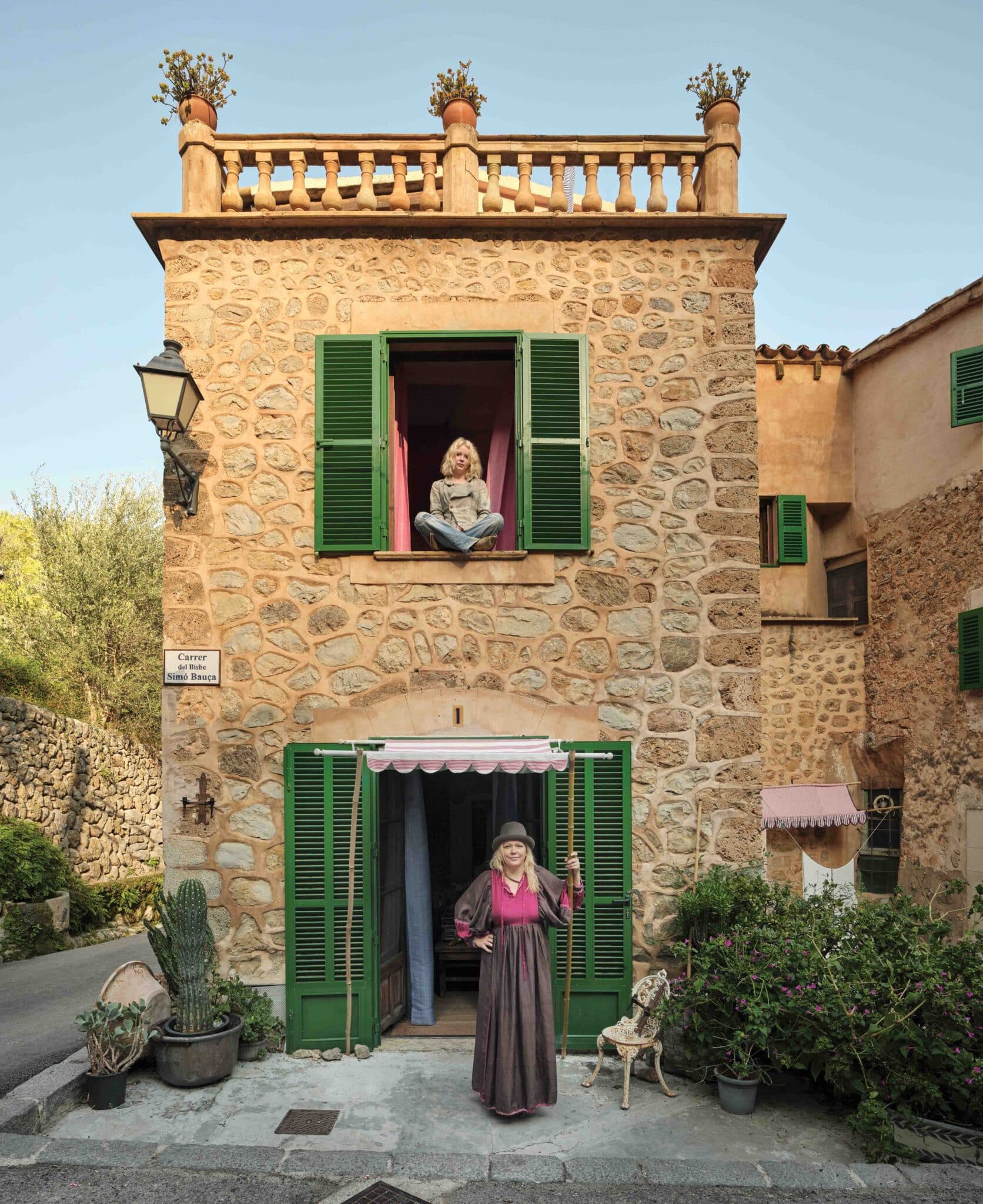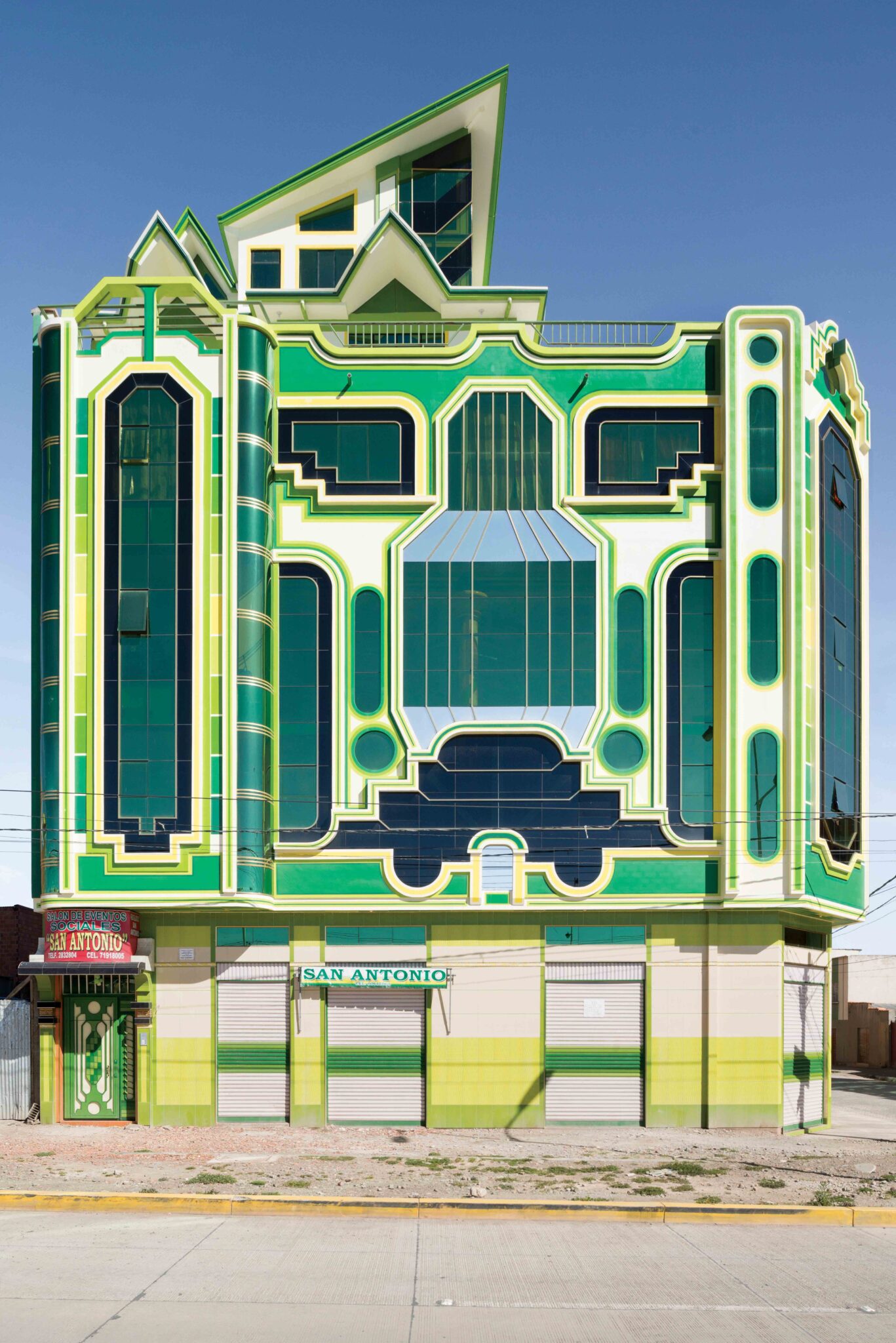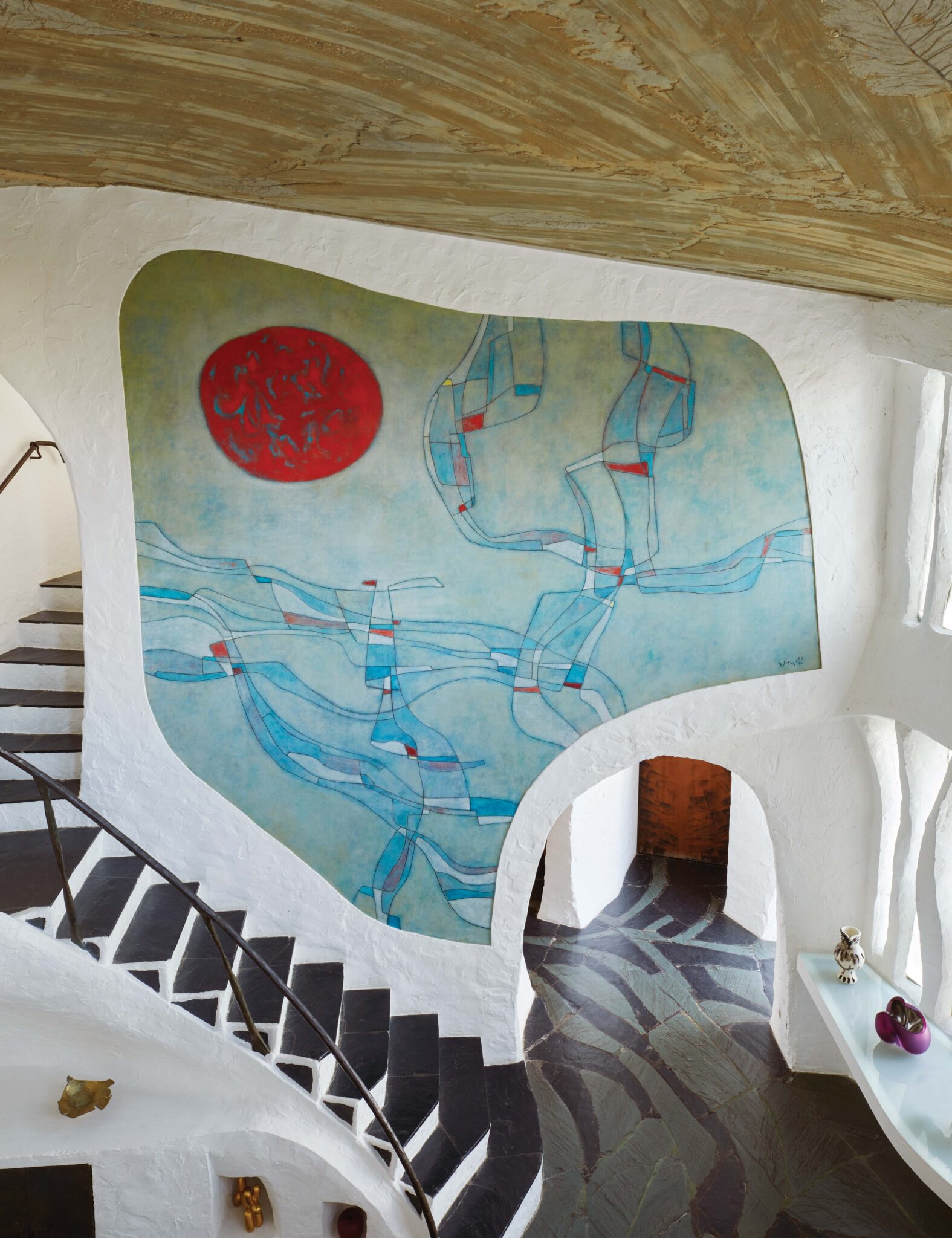The Majorcan countryside is not at all a place to go in search of inspiration; but admirable for people whose minds already teem with ideas that need recording,” the English poet and author Robert Graves once said of his adopted home in Spain’s Balearic Islands. For nearly 60 years, the writer made his home in Deià, a small coastal village about an hour’s drive north of the capital city of Palma that has also drawn such creatives as Andrew Lloyd Webber and Anaïs Nin.
About seven years ago, the town claimed another of those “teeming minds”: the Scottish decorator and antiquarian Amanda Pickett. She had recently moved to the island with her husband, Gary Clarke, and their five children, and found herself falling in love with Deià’s rugged, rustic beauty. “We met this woman who lived here and I remember she told us, ‘You don’t choose Deià. Deià chooses you.’ Well, after a few months, she asked us if we’d like to rent her place, and we’ve been stuck here ever since!”
-
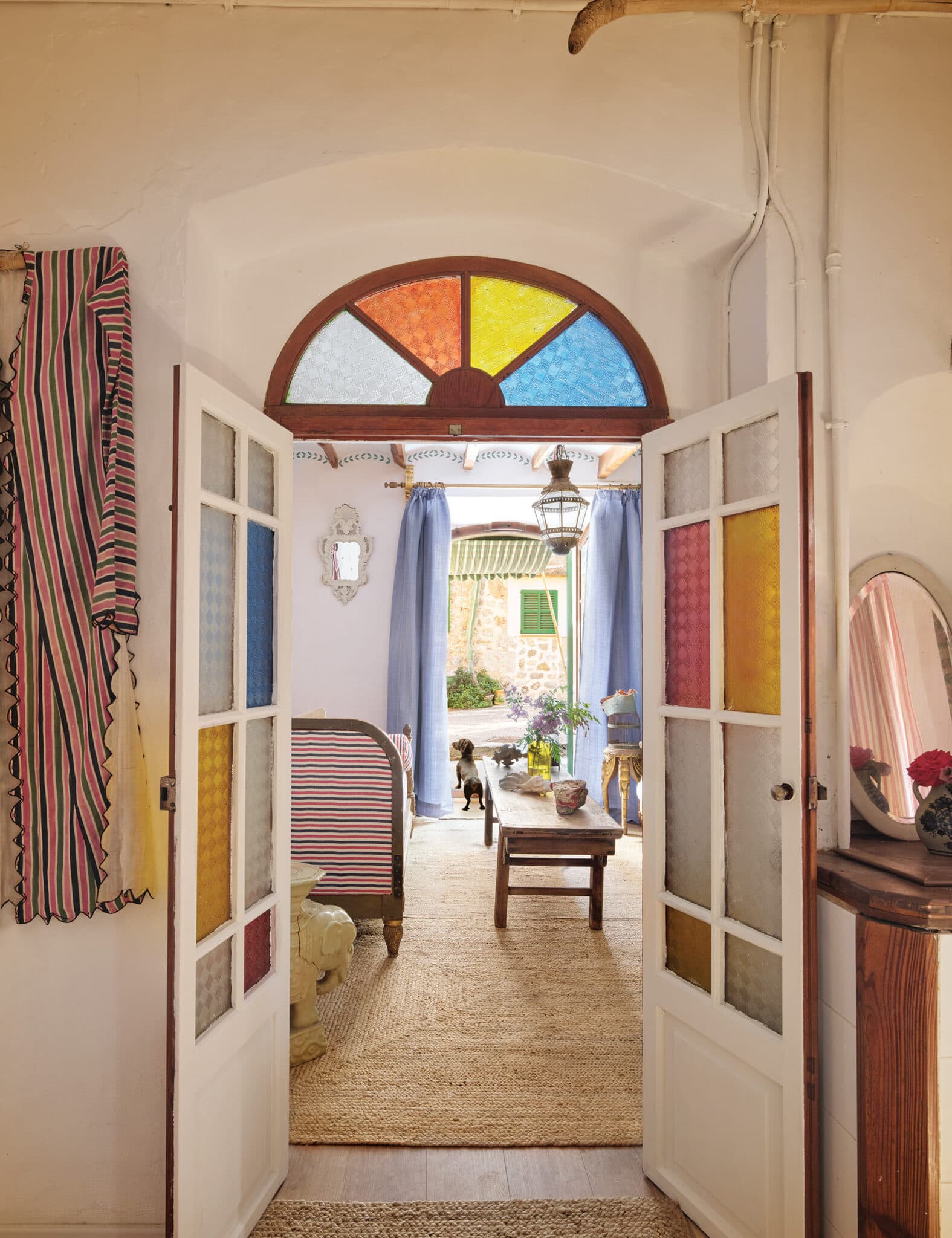
Pickett brightened up frosted panes with a coat of paint for a stained-glass effect. The Ottoman coat was a gift from her sister; its stripes and scallops are two of Pickett’s favorite motifs.
Francesco Lagnese -
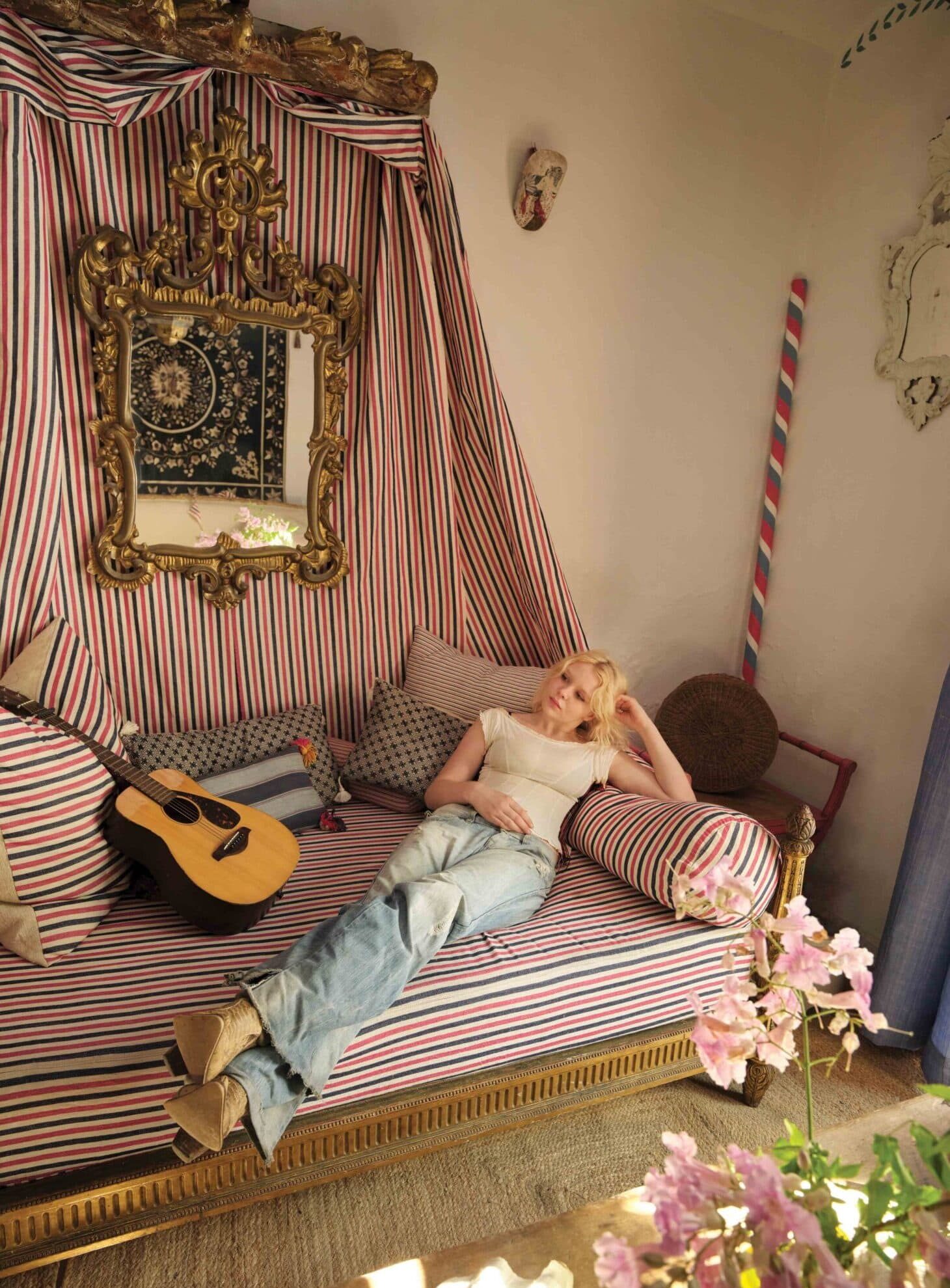
Scarlet lounges on the daybed, which is covered in a ticking stripe of Pickett’s own design.
Francesco Lagnese
Initially, Pickett and Clarke set up shop on the main street, but decided that a proper studio space—one where kids and dogs could run around freely instead of being relegated to the back room when customers visited—would better suit their lifestyle, so they purchased an old fisherman’s cottage in town. “It had been on the market for a while—it was one of those places that you had to be able to see the beauty in,” recalls Pickett. But to her, there was no denying its rustic appeal, with tower-like proportions and views of the centuries-old Sant Joan Baptista church nearby.
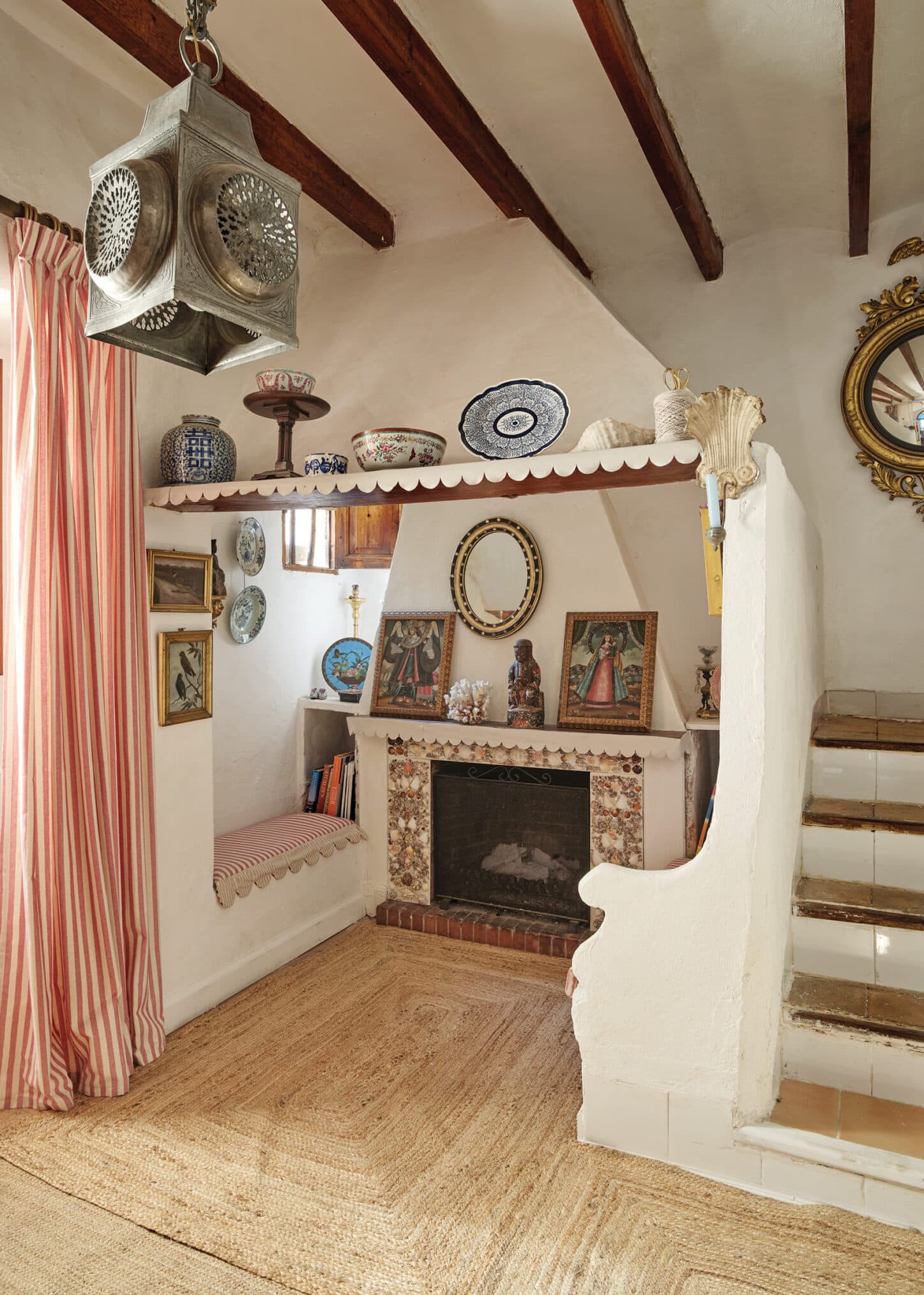
Pickett added scalloped trim to the shelves using bits of leather. “I didn’t really want to see that line of brown wood, so instead of painting it or taking it all out, I thought, let’s just make it more decorative!” Simple jute matting on the floors adds a bit of softness. “I find choosing rugs difficult because of the colors, so I always end up with something neutral,” Pickett explains.
Francesco LagneseNow home base for Pickett’s House, the couple’s design studio, the former casa de pescadores has become a creative laboratory of sorts, filled with pieces from Pickett’s extensive (and constantly growing) collection of antiques. The daughter of professional restorers who specialized in fine English furniture—primarily Georgian and Regency—she has spent a lifetime enthralled by objects whose beauty is only part of the story. Take the 1870s Scottish bed that was one of her and Clarke’s first purchases as a young couple, the headboard still covered in its original silk. “It’s almost become like a member of the family or an old friend,” she says. “It’s gotten a bit discolored at the top, but I think it looks quite cool. We love the story and the faded grandeur.”
Many more pieces were picked up locally, like a scarlet red canopy suspended from the ceiling of another bedroom. “It came from the house of a local lady who had a lot of old fabric,” explains Pickett. “It was in two pieces, and I said, ‘That must be for a bed.’ She told me, ‘No, no, we used to put them outside when there was a fiesta!’ Of course, when I brought it home, the trim fit perfectly around the edge of the rectangle—I knew it was a canopy.” Now hung by wires, “It’s quite fun, a bit like a gondola or something!”

Pickett and her husband purchased the late-19th-century bed in St. Andrews when they were first married and have brought it with them from house to house ever since. The panel comes from a Chinese screen; the curtains are made from an antique Turkish striped fabric. A tartan bedskirt adds a bit of Scottish appeal.
Francesco Lagnese-
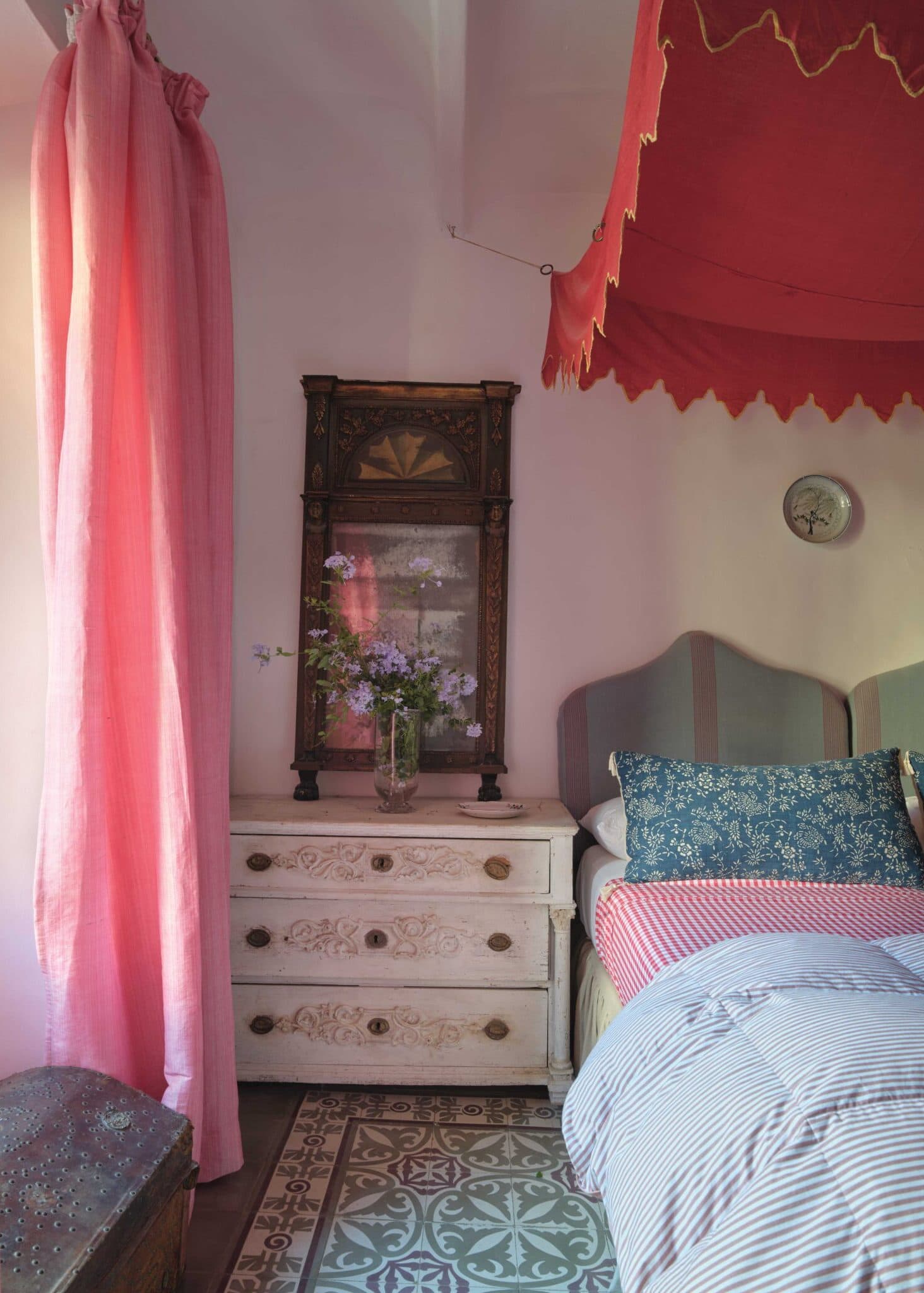
Suspended by wires from the ceiling, a red canopy creates an unexpected effect in one of the bedrooms. “It’s a bit weird to have it just hanging in the middle of the room like that, but I think it’s quite fun, like a tent,” Pickett says. A painted 18th-century commode acts as a bedside table; the headboards are covered in a fabric of Pickett’s design.
Francesco Lagnese -
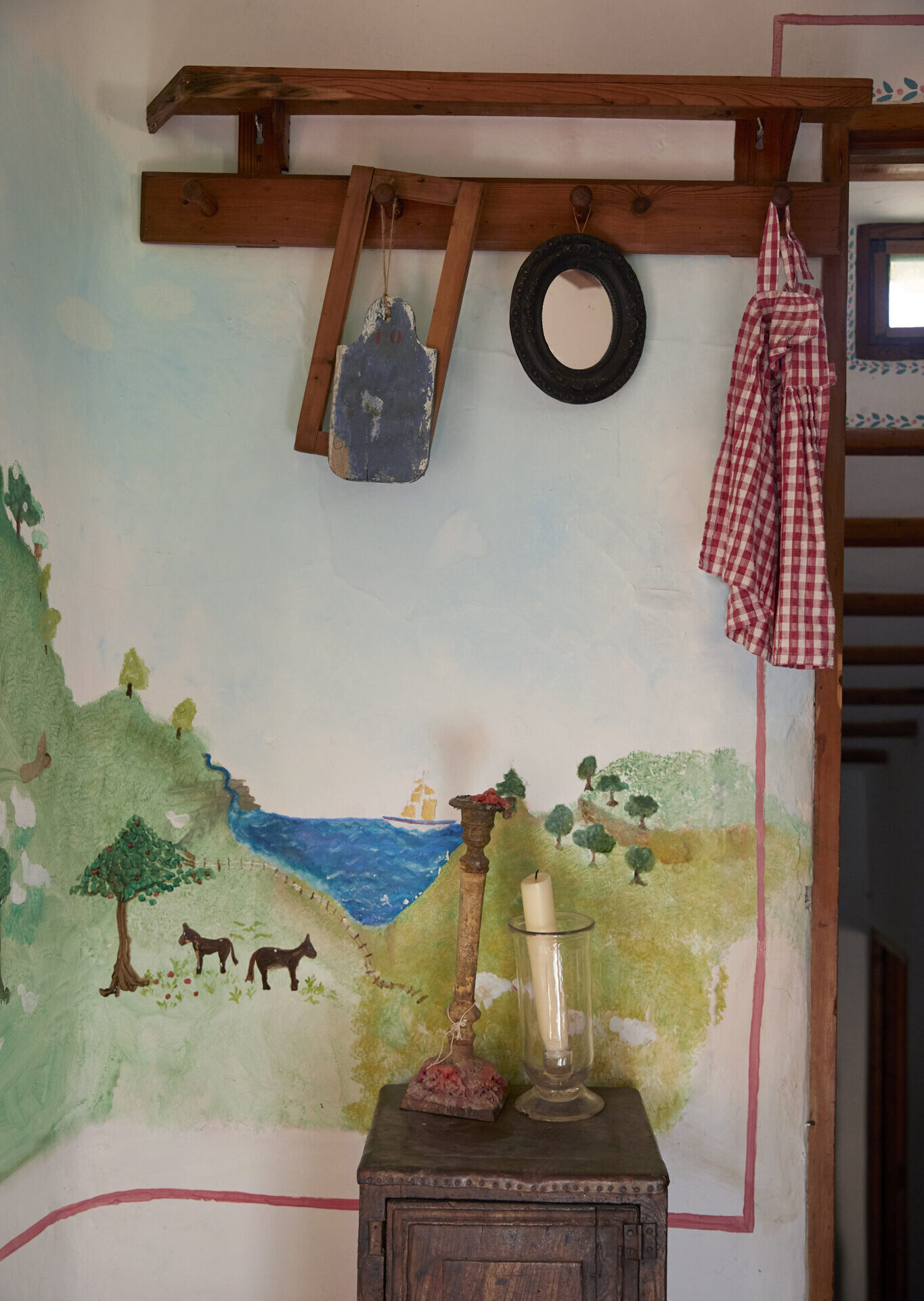
“It was one of those places that you had to be able to see the beauty in,” says Pickett of her family’s home, which she decorated with handpainted murals and flourishes throughout.
Francesco Lagnese
While Pickett has immense respect for the provenance of her items, she’s also unafraid to update or display them in her own unconventional way. In the living room, a French daybed was reupholstered in a bright blue-and-red stripe, which Pickett had woven locally. (The inspiration: “A piece of fabric I found a long time ago and have carried with me for 15 years.”) Likewise, the house’s traditionally Mallorcan bones—whitewashed plaster walls, wood-beamed ceilings—have been embellished and decorated with personal touches. Pickett painted the frosted glass panes of doors leading from the entrance hall in a rainbow of hues and trimmed the fireplace mantel and shelves with scalloped strips of leather. (“I’m quite obsessed with scallops,” she says.) When she wanted to enhance the arched door and ceiling in the living room, she painted garlands of blue leaves directly on the walls. “I could’ve just painted the beams white too, but that wouldn’t be very traditionally Mallorcan, and that’s what I love about the house,” she says.
While the couple’s oldest daughter is now grown and living in Scotland, their four youngest can still be found playing, creating, and dreaming in the studio alongside their parents. “It’s always been important for me to have them be able to be nearby, even when we’re working. It’s an idyllic lifestyle,” says Pickett. “It’s quirky, of course, but it’s just right for us.”
-
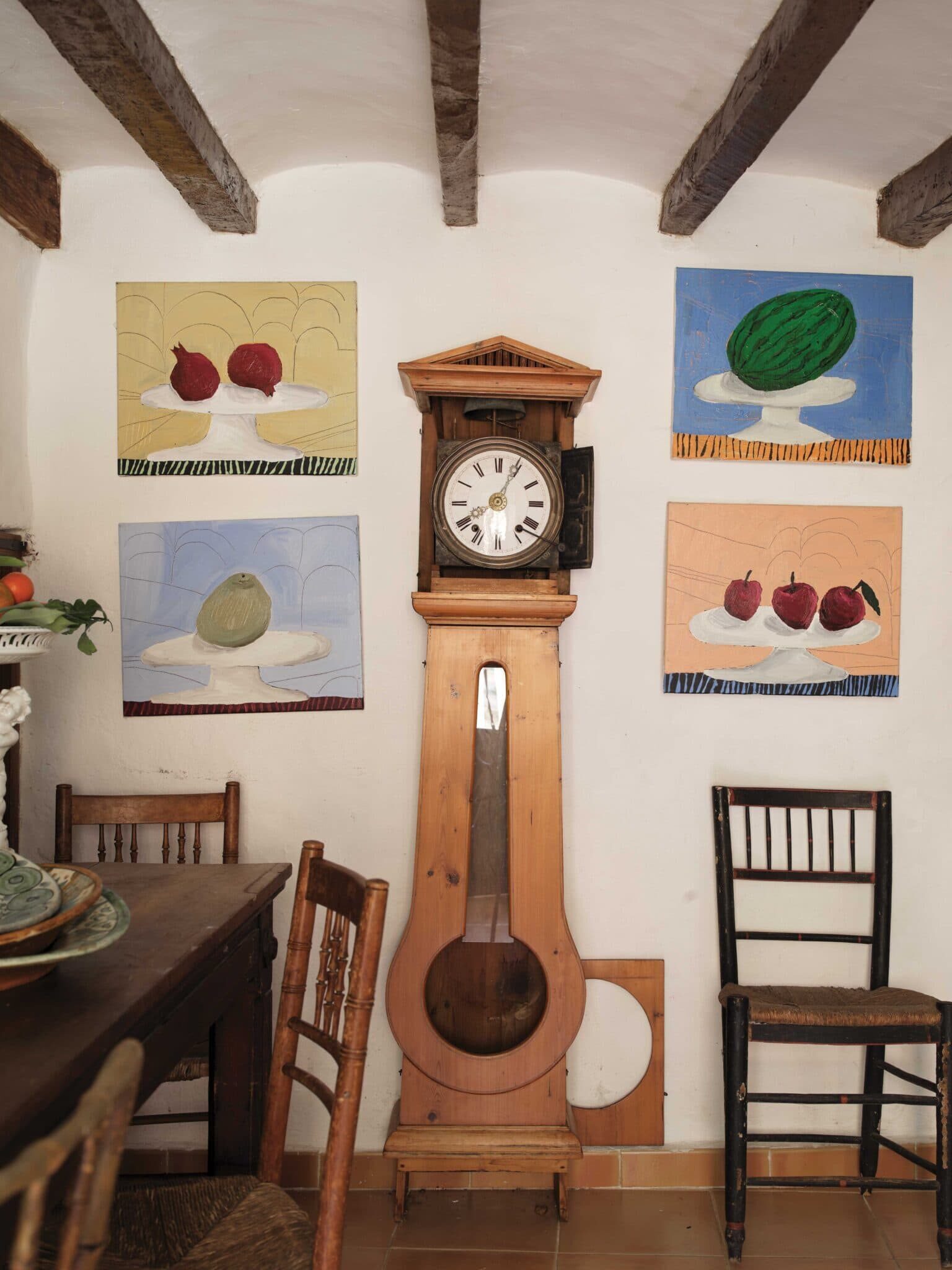
In the kitchen, a quartet of paintings by Australian artist Magnus Reid surrounds a clock that Pickett salvaged nearby. (“It was actually thrown out for rubbish, isn’t that amazing?” she muses.) The Scottish chair on the right is one half of a set; the others are local finds.
Francesco Lagnese -
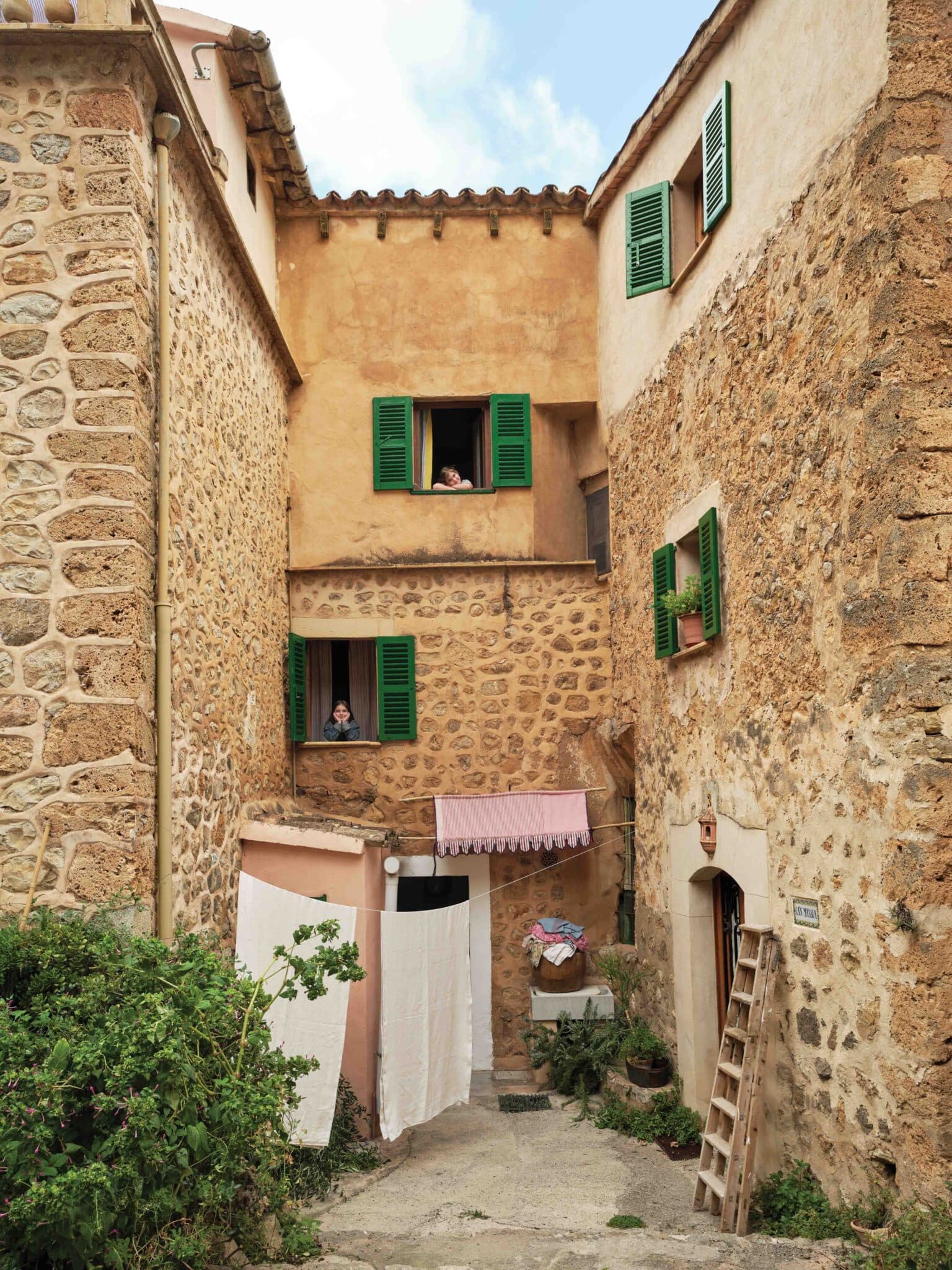
Pickett’s youngest, 8-year-old twins Olive and Liberty, peek out from the windows. The shutters are painted in traditional “Soler green,” which can be found throughout the island.
Francesco Lagnese
THIS ARTICLE ORIGINALLY APPEARED IN VOLUME 11 OF FREDERIC MAGAZINE. CLICK HERE TO SUBSCRIBE!
